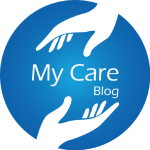Hiring compassionate home care workers doesn’t have to be a challenge. With the right approach to linkedin recruiting, you can connect with qualified healthcare professionals who truly care about their work.
Traditional hiring methods often fall short in the healthcare industry. Job boards attract countless applications, but many candidates lack the specific experience your agency needs. LinkedIn changes this dynamic completely.
What Makes LinkedIn Different for Healthcare Hiring
LinkedIn functions as a professional showcase where healthcare workers display their credentials, experience, and recommendations. This transparency helps you identify candidates before investing time in interviews.
Unlike standard job sites, LinkedIn allows you to research potential hires thoroughly. You can review their work history, see endorsements from colleagues, and understand their career progression.
Healthcare professionals use LinkedIn to network and share industry insights. Active users often demonstrate genuine passion for their field through posts and interactions.
Creating an Attractive Company Presence
Your LinkedIn business profile serves as your digital storefront for potential employees. It should clearly communicate your agency’s mission and workplace culture.
Write a compelling company description that highlights what sets your agency apart. Focus on employee benefits, growth opportunities, and your commitment to quality care.
Upload authentic photos showing your team in action. Real images of caregivers working with clients create emotional connections with potential applicants.
Share regular updates about your team achievements, training programs, and community involvement. Active profiles signal a thriving business that values its employees.
Smart Search Techniques for Finding Candidates
LinkedIn’s advanced search features help you locate ideal candidates based on specific criteria. Use location filters to find local professionals and experience filters to match skill levels.
Search for current job titles like “certified nursing assistant,” “home health aide,” or “personal care worker.” These professionals already understand the demands of home care work.
Review candidate activity levels on the platform. People who regularly engage with healthcare content show dedication to their profession.
Examine professional recommendations carefully. Previous employer feedback reveals important insights about work ethic and patient interaction skills.
Building Professional Networks Proactively
Smart linkedin recruiting involves relationship building long before you need to hire. This proactive approach creates a talent pipeline for future openings.
Send personalized connection requests to healthcare professionals in your region. Reference something specific from their profile to show genuine interest.
Engage meaningfully with their professional posts. Thoughtful comments on their content keep your agency visible in their network.
Share valuable industry information regularly. Post caregiving tips, training opportunities, or team recognition to establish thought leadership.
Participate actively in healthcare LinkedIn groups. Contributing to discussions helps you meet potential candidates organically.
Crafting Compelling Job Advertisements
Your LinkedIn job posts must differentiate your agency from competitors. Emphasize unique benefits and growth opportunities rather than just listing basic requirements.
Use clear, searchable job titles that healthcare workers recognize. Terms like “live-in caregiver” or “registered nurse – home care” attract qualified applicants.
Focus your description on what employees gain from working with you. Highlight flexible scheduling, continuing education support, or advancement opportunities.
Include specific qualifications upfront. If you need dementia care experience or specific certifications, state this clearly to filter applications.
Provide transparent compensation information. Healthcare workers appreciate employers who respect their time with honest salary ranges.
Effective Outreach Communication
Initial contact messages determine whether quality candidates will consider your opportunities. Professional yet personal communication works best.
Reference specific elements from their LinkedIn profile in your opening message. This personal touch shows you value their individual background.
Briefly explain why you’re contacting them and what opportunities you offer. Avoid lengthy sales pitches in initial communications.
Ask open-ended questions about their career interests. This approach starts conversations rather than one-sided recruitment attempts.
Keep messages concise and professional. Busy healthcare workers respond better to direct, respectful communication.
Targeting Different Healthcare Roles
Various positions require tailored linkedin recruiting approaches. Nurses need different messaging than direct care workers.
For licensed professionals, emphasize continuing education opportunities and scope of practice. These candidates value professional development highly.
When seeking direct care workers, highlight your training programs and support systems. Many enter healthcare through these roles and appreciate comprehensive onboarding.
For supervisory positions, focus on leadership development and team management opportunities. Experienced professionals seek growth potential.
Recent healthcare graduates represent excellent hiring opportunities. They bring current knowledge and often seek supportive work environments.
Tracking Performance and Results
Monitor your LinkedIn recruiting efforts to identify successful strategies and areas needing improvement. Data-driven decisions improve hiring outcomes over time.
Track job post engagement rates and application quality. Low engagement might indicate title or description adjustments are needed.
Monitor response rates to your outreach messages. Poor responses often signal messaging problems rather than candidate disinterest.
Measure time-to-hire for LinkedIn versus other recruiting methods. This comparison helps justify your platform investment.
Document which types of posts and content generate the most candidate interest. Use these insights to refine your content strategy.
LinkedIn recruitment services can supplement your internal recruiting efforts when needed. However, building your own LinkedIn presence remains crucial for sustainable hiring success.
Frequently Asked Questions
What is LinkedIn recruiting and how does it work?
LinkedIn recruiting involves using LinkedIn’s platform to find, connect with, and hire healthcare professionals. It works by leveraging LinkedIn’s search tools and networking features to identify qualified candidates and build relationships with them over time.
How much does LinkedIn recruiting cost for small agencies?
LinkedIn offers free basic recruiting features including job posting and candidate search. Premium recruiting plans start around $60 monthly but aren’t necessary for small agencies starting their LinkedIn recruiting journey.
Can I find certified nursing assistants through LinkedIn?
Yes, many certified nursing assistants maintain LinkedIn profiles showcasing their credentials and experience. Use specific search terms like “CNA,” “certified nursing assistant,” or “home health aide” to find qualified candidates.
How long does it take to see results from LinkedIn recruiting?
Building relationships takes time, but many agencies see qualified candidates within 2-3 months of consistent activity. Immediate hiring needs can be met faster through direct outreach to active LinkedIn users.
Should I use LinkedIn if I only hire part-time workers?
Absolutely. Many healthcare professionals prefer part-time or flexible schedules. LinkedIn helps you find workers seeking these arrangements, especially parents returning to healthcare or professionals seeking work-life balance.
LinkedIn recruiting transforms how home care agencies connect with quality staff. Success requires patience, consistency, and genuine relationship building rather than quick fixes.
 :
https://dsdrecruitment.com/linkedin-recruiting/
:
https://dsdrecruitment.com/linkedin-recruiting/

